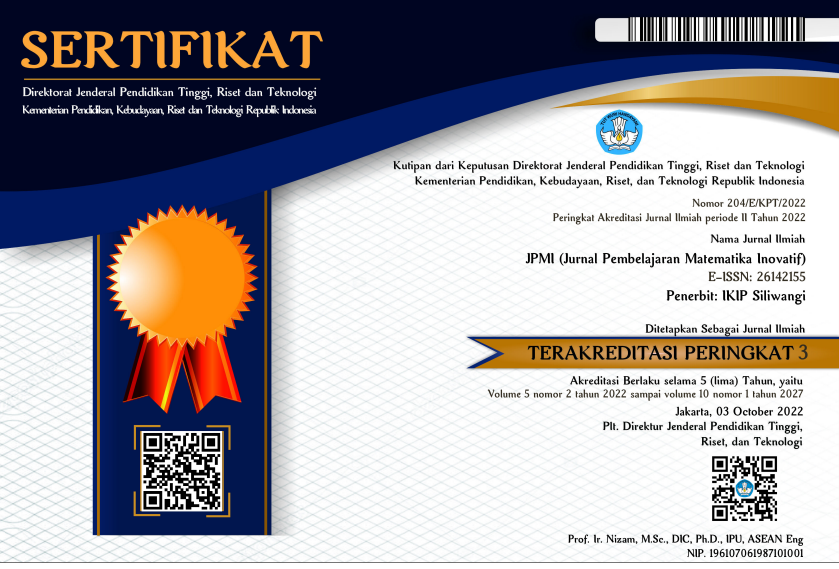Analisis Kemampuan Pemahaman dan Disposisi Matematik Siswa SMP Pada Materi Bangun Ruang Sisi Datar
DOI:
https://doi.org/10.22460/jpmi.v1i6.p1121-1128Keywords:
Mathematical Understanding, Mathematical Disposition, Flat Side Room.Abstract
In this study the authors analyze about the difficulties students in the process of mathematical understanding ability and to determine the level of category of mathematical disposition on each item statement. Based on the analysis, the mistakes made by students in doing the mathematical understanding problems on the material on the flat side room on the indicator of applying the concept or problem-solving algorithm only reached 21% and the average percentage of students' mathematical understanding ability is 39%. The question instruments used are questions that have been tested for reliability, validity, differentiation and difficulty indexes have also been validated by expert validators. The mathematical disposition of junior high school students on the material of the flat side room is 49%. The lowest percentage is in the indicator has a sense of interest that affects other indicators. The research method used qualitative descriptive analysis to find out how far the achievement of indicator of mathematical understanding ability and to know the level of category of mathematical disposition at each item statement. Based on the results of the overall research that the achievement of indicators of mathematical understanding ability has not been fully achieved and the ability of students disposition is low.
References
Chotimah, S., & Hamidah, H. (2015). PENGARUH MODEL PEMBELAJARAN VAN HIELE TERHADAP KEMAMPUAN KONEKSI MATEMATIS SISWA SMP, 2(2), 203–208.
Chotimah, S., Bernard, M., & Wulandari, S. M. (2018). Contextual approach using VBA learning media to improve students’ mathematical displacement and disposition ability. In Journal of Physics: Conference Series (Vol. 948). https://doi.org/10.1088/1742-6596/948/1/012025
Depdiknas. (2006). Kurikulum 2006 Standar Kompetensi Mata Pelajaran Matematika. Jakarta: Departemen Pendidikan Nasional.
Deprilliani, R. (2017). Meningkatkan Kemampuan Pemahaman Matematik Siswa SMP Melalui Pendekatan. Cimahi: Tidak Diterbitkan.
Friana, H. (2018). Nilai Rata-rata Ujian Nasional SMP Tahun 2018. Retrieved from https://tirto.id/hasil-unbk-smp-2018-rata-rata-nilai-turun-kecuali-bahasa-inggris-cLiy
Jihad, A. dan Haris, A. (2010). Evaluasi Pembelajaran. Yogyakarta: Multi Pressindo.
Magdalena, F. (2013). Pengaruh Model Pembelajaran Kooperatif Tipe Group Investigation terhadap Pemahaman Konsep Matematis Siswa SMP. Jakarta: Tidak Diterbitkan.
Ruseffendi, E. T. (2006). Pengantar kepada Membantu Guru Mengembangkan Kompetensinya dalam Pengajaran Matematika untuk Meningkatkan CBSA. Bandung: Tarsito.
Wahyudin. (2015). Penelitian Pendidikan Matematika. Bandung: Refika Aditama.

















